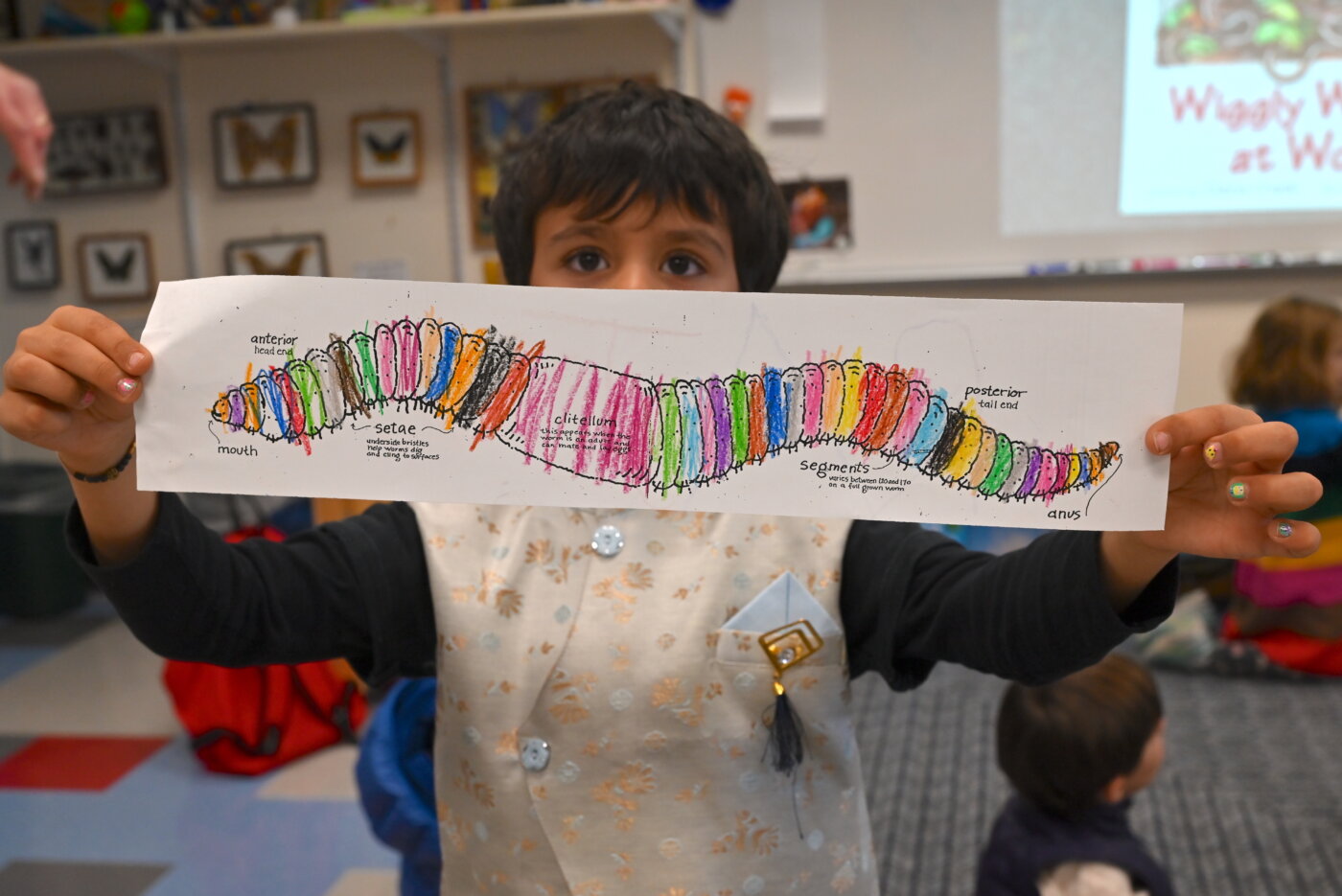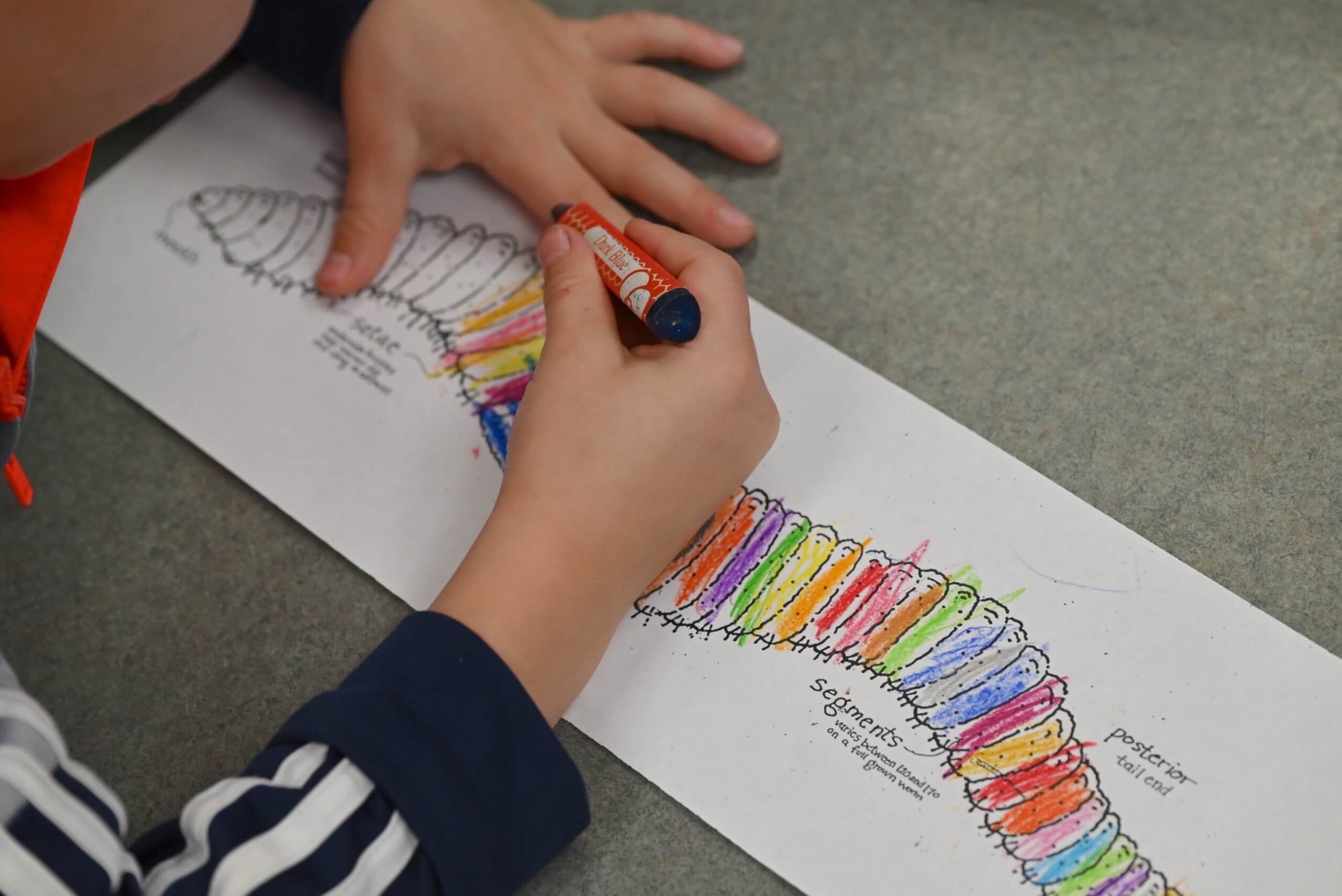The Colorado Academy Pre-Kindergarten students busily working in the Lower School science classroom of teacher Jeff Goldstein ’88 are excited to meet their new “pets.”
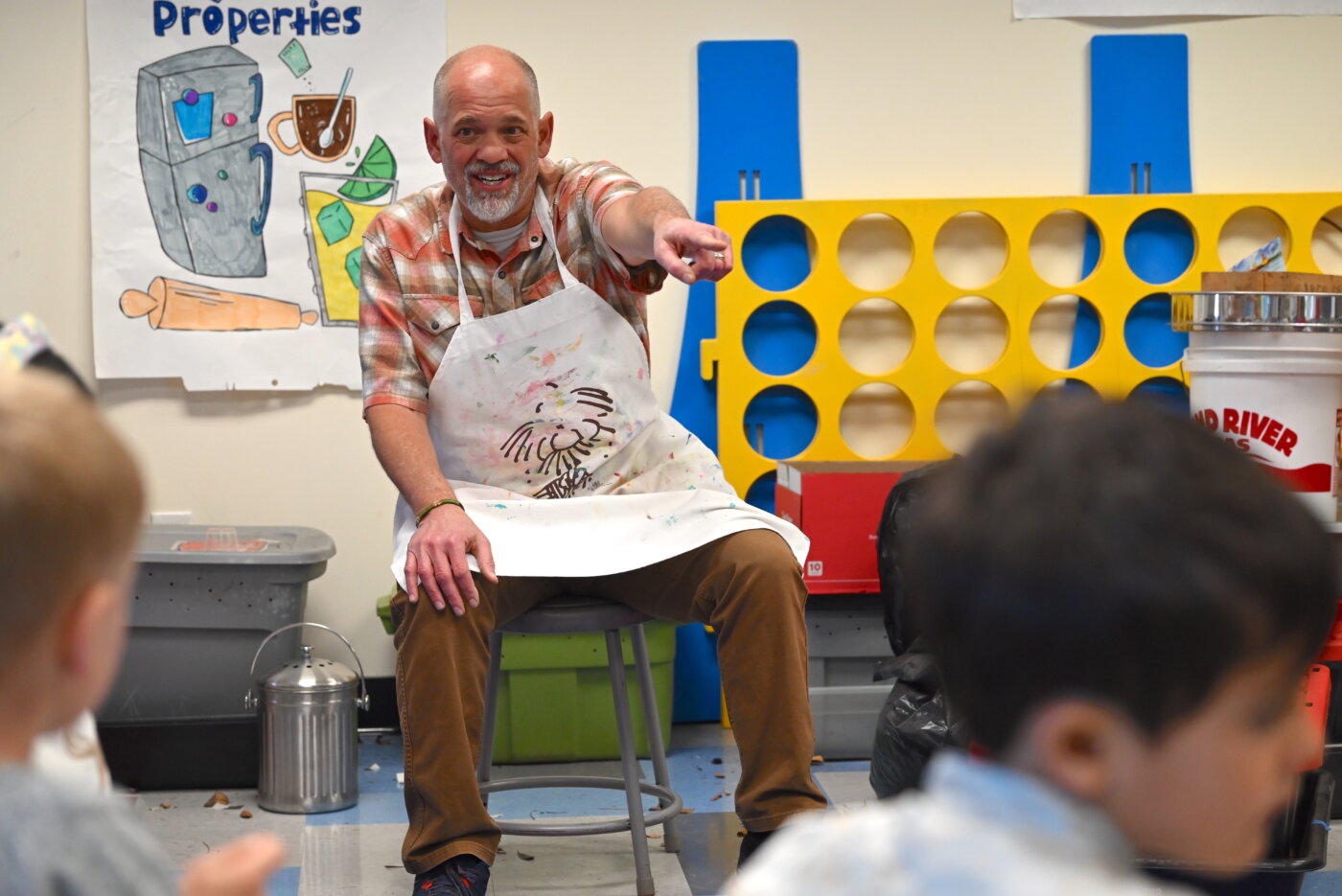
All morning, they have been getting messy, mixing together leaves they gathered around the CA campus with shredded newspaper and water in a ventilated storage container to create a bed for the mystery creatures.
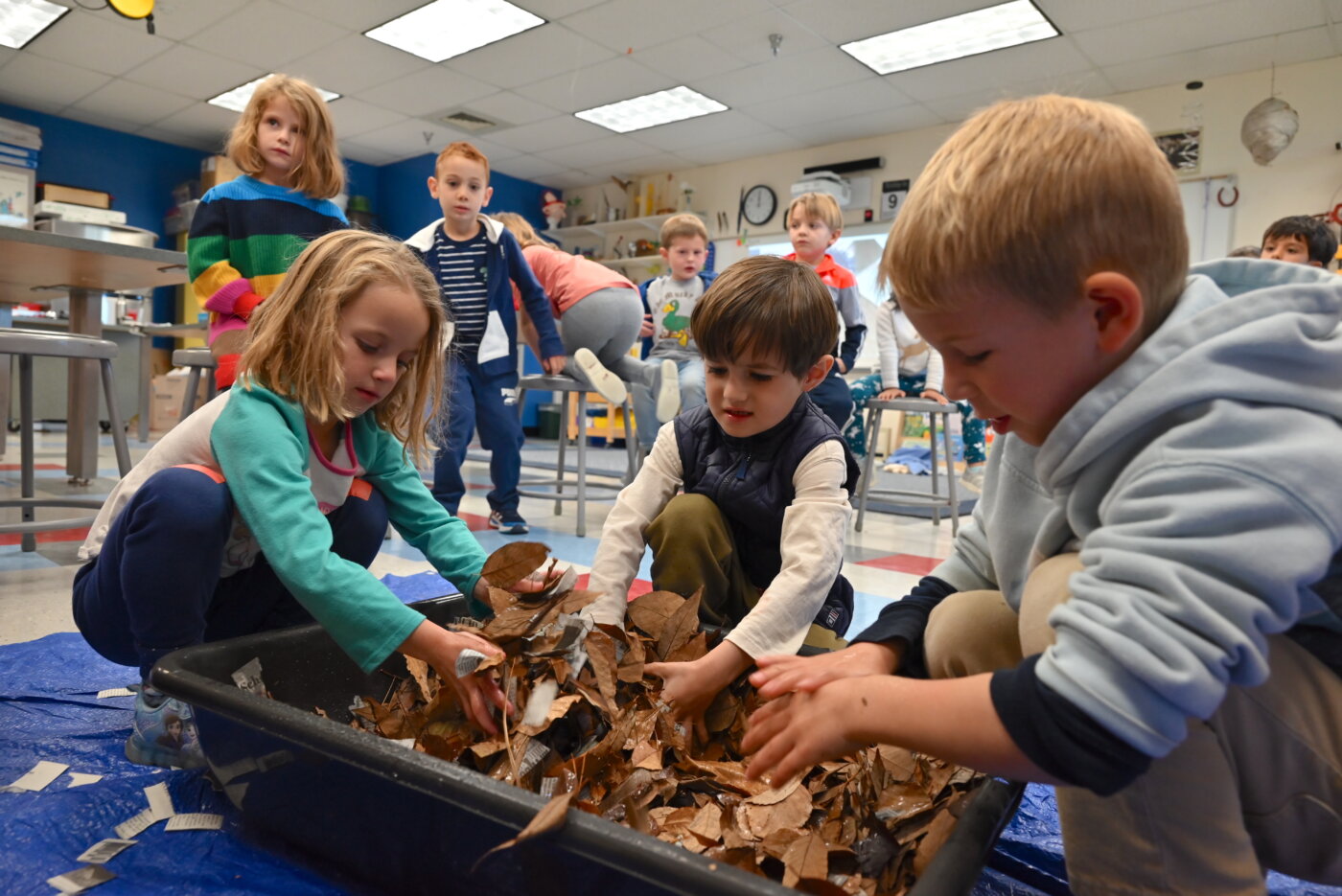
It is finally time for the big reveal.
“These are the best pets,” Goldstein tells the children, building up the anticipation. “You don’t have to take them on a walk. You don’t have to take them to the vet. They don’t make any noise. And we can fit about 500 of them in our classroom.”
Holding up a small canister that appears to be filled with dirt, Goldstein carefully pours out a wiggling mass. The students ooh and aah as they realize their pets are earthworms. “That is serious!” one slightly nervous Pre-K scientist exclaims.
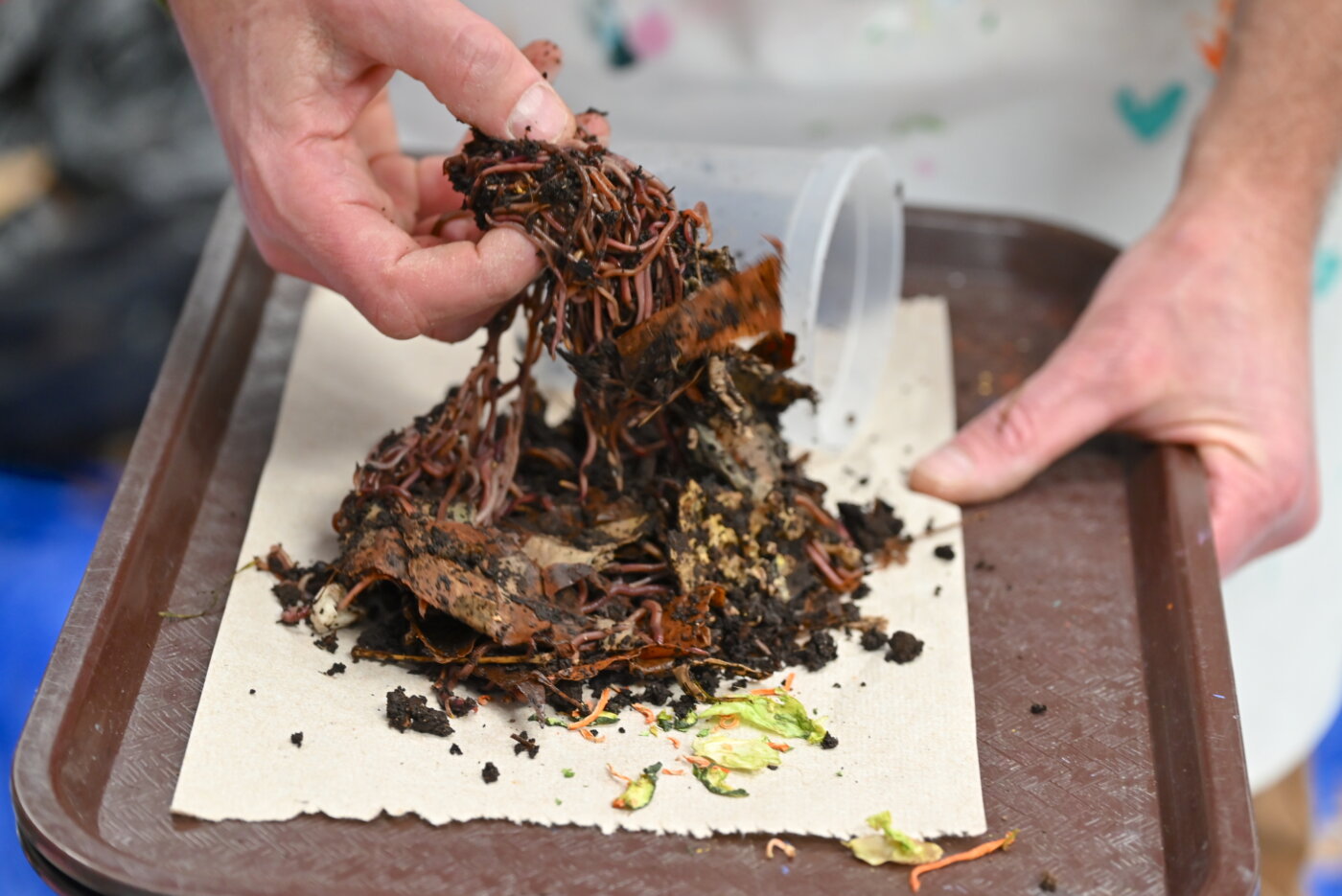
“It is serious,” Goldstein affirms. “Do you know what they’re serious about? They are serious about eating their bed and recycling.”
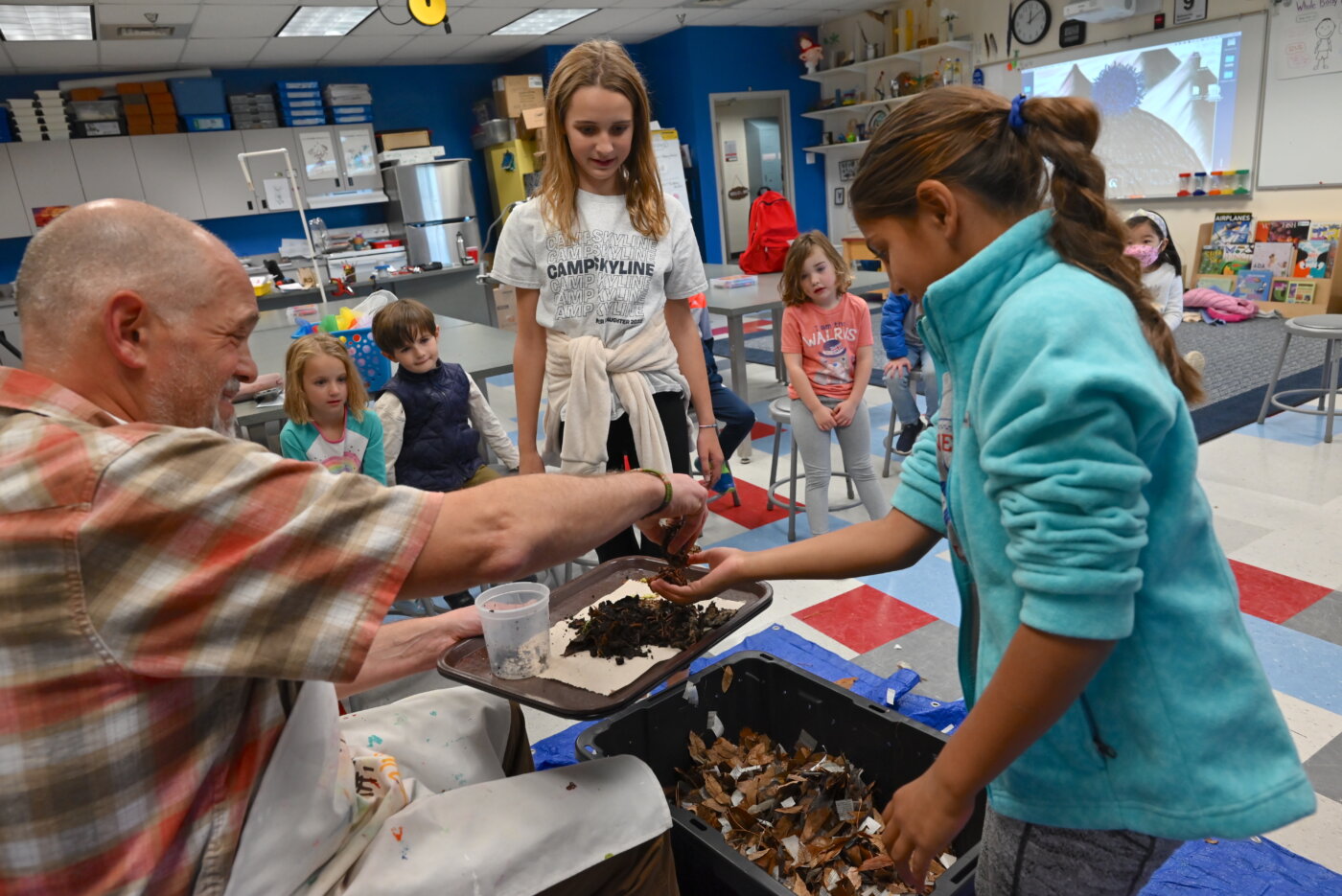
With the help of two Fifth Grade Mustang Mentors, Goldstein places the worms in the luxurious accommodation the students have prepared for them. He then unwraps a collection of food scraps from CA’s Dining Hall, which he mashes together for a “worm sandwich” that he feeds to the hungry recyclers. The students are surprised to learn that the worms will eat almost anything, from moldy banana peels to egg shells and coffee grounds.
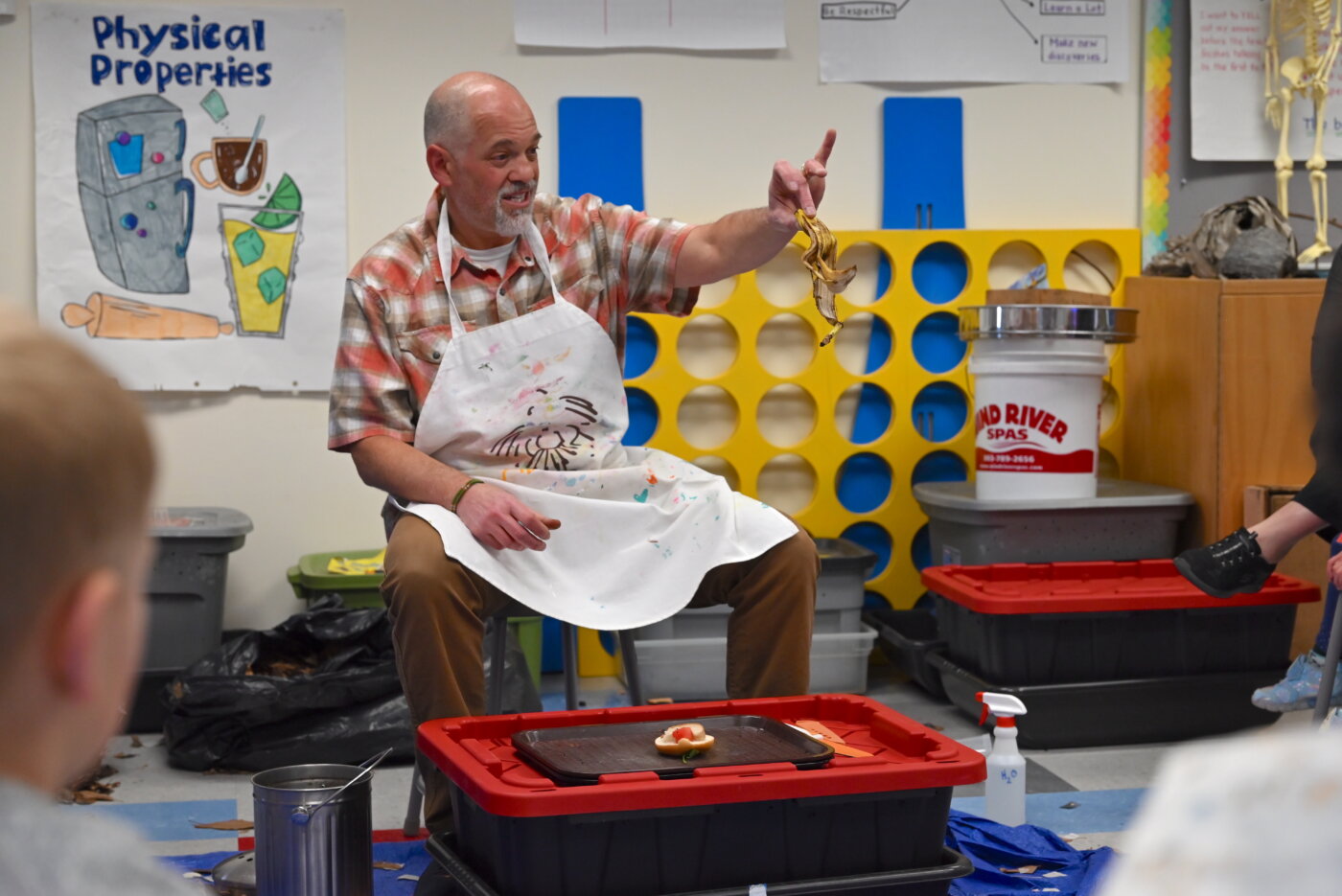
“Does anyone want a bite of the worm sandwich?” Goldstein jokingly asks his class. “No!” is the unanimous answer.
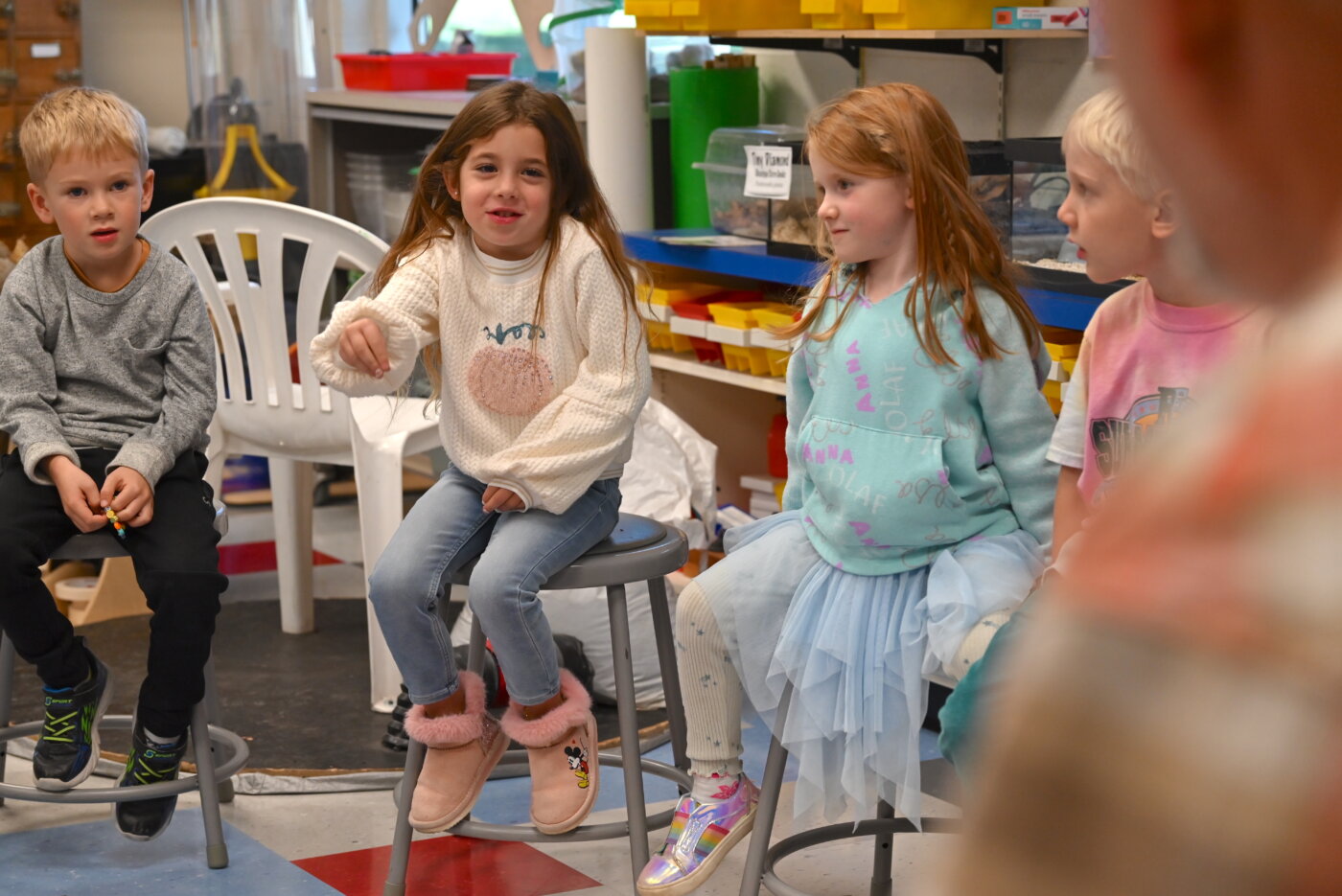
Vermicomposting is a process that relies on earthworms and microorganisms to help stabilize active organic materials and convert them to a valuable soil amendment and source of plant nutrients. Earthworms will consume most organic materials, including food preparation residuals and leftovers, scrap paper, animal manure, agricultural crop residues, organic byproducts from industries, and yard trimmings. Instead of disposing of them, the materials can be vermicomposted.
As part of his fall science curriculum, Goldstein introduces students in Pre-K, K, and Grades 1 and 3 to earthworms and their powerful abilities. The young scientists learn that earthworms are essentially one long digestive system, designed to break down organic material and release those nutrients back into the soil. Gardens, fields, and farms wouldn’t be able to grow the food and support the crops and animals humans need to survive without worms, and research even suggests they can help clean up polluted land, turning it back into rich, fertile ground.
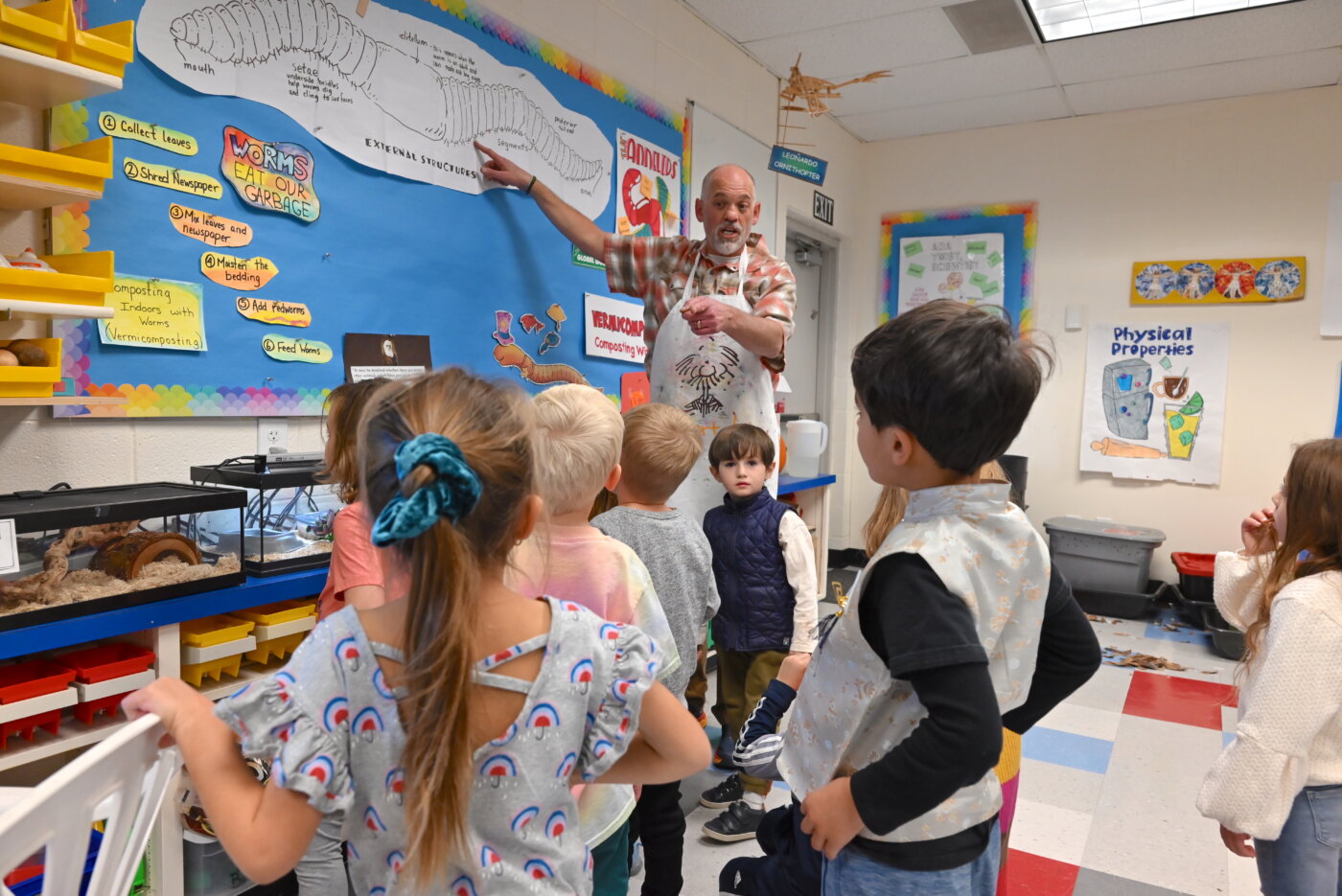
Goldstein, who is CA’s Lower School sustainability lead, says that learning about earthworms can change the way students look at food in their lives.
“Some studies say humans waste up to a third of the food we produce globally,” he explains. “More than a billion tons of food annually ends up as waste in landfills. That is a lot of energy and resources wasted. Vermicomposting is a way for children to learn about solid waste issues and, in our own small way, reduce and recycle yard waste and food waste.”
As Goldstein’s students learn more about earthworms and their “superpowers” throughout the school year, they conduct follow-up experiments with the worm castings and plants to highlight the nutrient-rich compost that the critters produce.
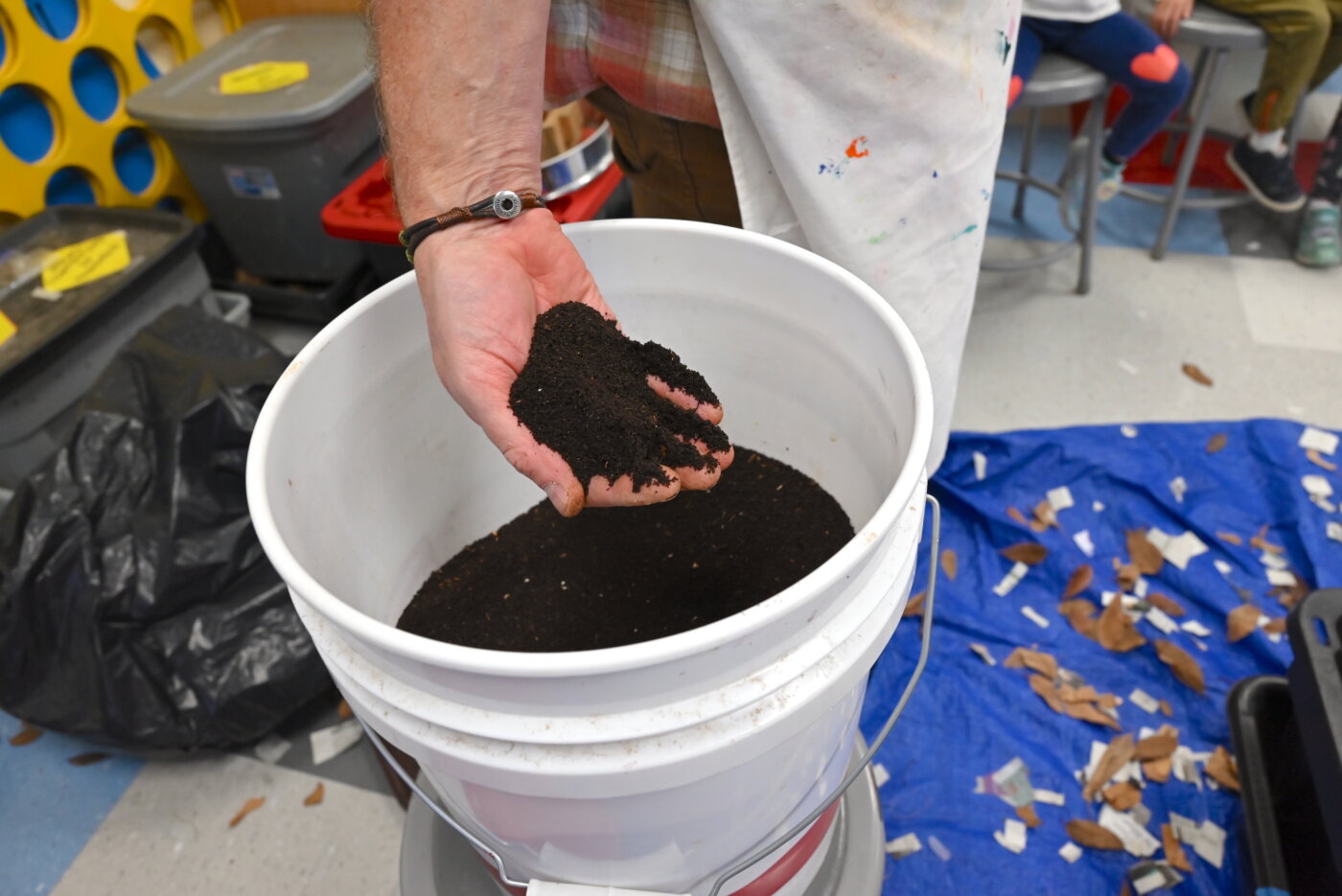
“Vermicomposting is a springboard to inquire about life cycles, soil, recycling, decomposers, respiration, and more,” says Goldstein. “Children are natural scientists, and they tend to love invertebrates and other critters. I want them to begin developing a respect for animals, and to learn about their habitat, needs, behaviors, structures, and their relationship to other living things. The humble red wiggler worms have it all. They are perfect for cross-curricular activities and allow for opportunities to observe, record data, measure, and begin a journey of authentic scientific investigations.”
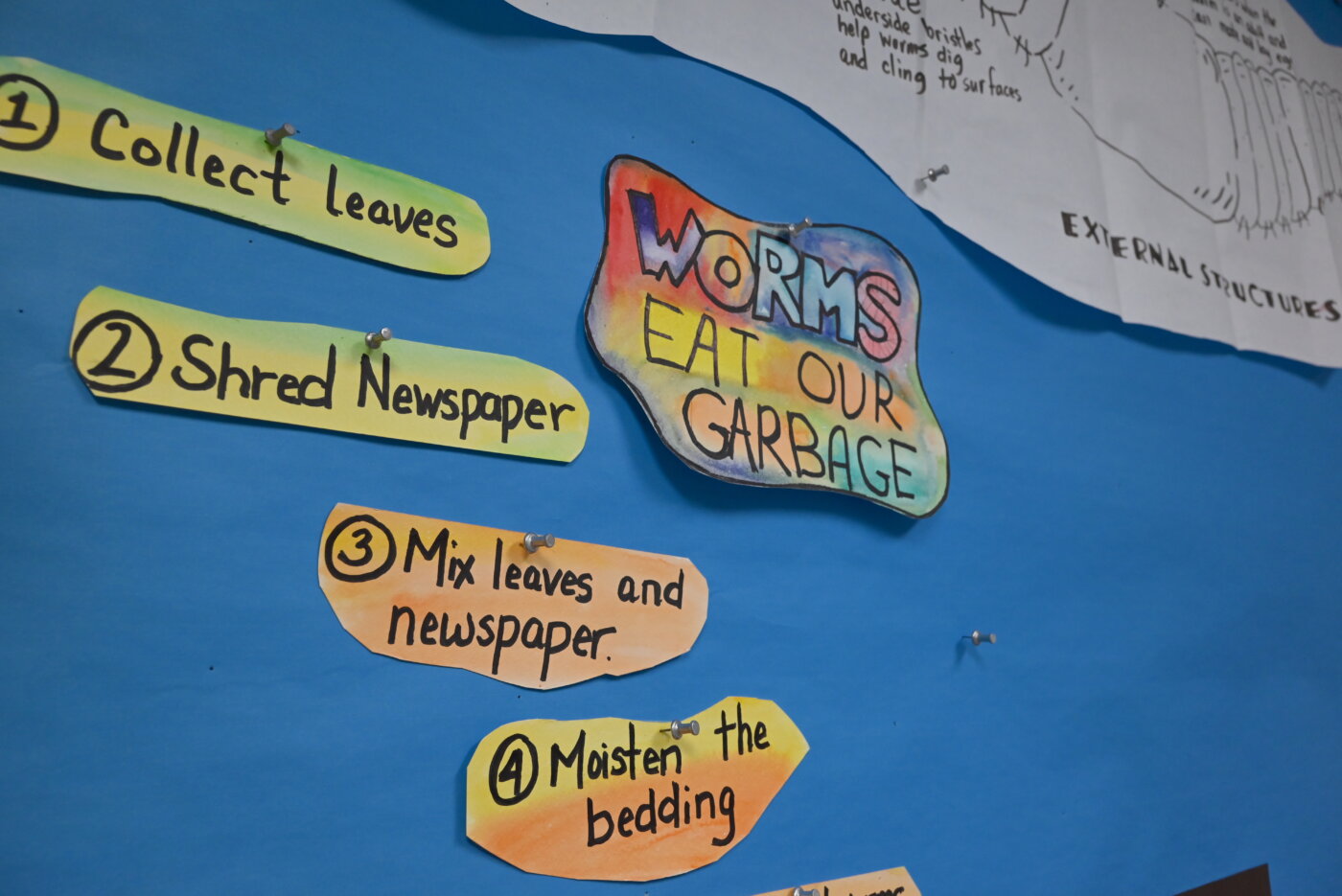
Earthworms also provide a natural tie-in to CA’s campus-wide commitment to recycling and composting, foundational to the school’s environmental stewardship efforts. Bins for recycling and composting are strategically placed throughout campus, and nearly zero waste is produced from the Dining Hall—95% is composted. Composting of food leftovers as well as leaves and grass clippings on CA’s campus has diverted 60,000 pounds of waste from landfills. The addition of a high-tech biodigester in 2022 promises to reduce waste even further, providing organic fertilizer for landscaping.
Such initiatives may be far from the Pre-K students’ minds as the first day’s meet-and-greet comes to an end. But when Goldstein’s young scientists settle down with crayons to color in a detailed earthworm diagram, they are nonetheless joining in a movement—schoolwide and worldwide—to build a sustainable future where societies recognize that the Earth’s resources are finite and, working together, protect environmental health, social equity, and economic vitality in order to create thriving, healthy communities for generations to come.
